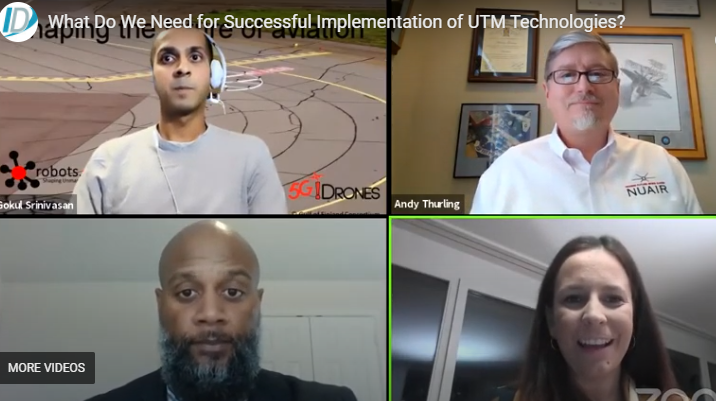By Jenny Beechener
“Being able to see drones, highlight where they are flying, and share that visibility with the general public will go a long towards alleviating public concerns,” Ernest Huffman, aviation planning and education manager for North Central Texas Council (NCTCOG), told InterDrone online delegates attending the session on successful implementation of UTM technology. Publication of the Federal Aviation Administration (FAA) Remote ID rule – anticipated this month – will help provide this visibility and is key element of Unmanned Traffic Management (UTM).
“Remote ID is a double-edged sword,” warned Gokul Srinivasan, Technology Director at Robots Expert. “Classifying cooperative targets is a great start, however we are missing non-cooperative aircraft.” Both FAA and European Aviation Safety Agency (EASA) are looking at ways to mitigate the harmful effects of drones, for example combining UTM and counter drone solutions, and remote ID is a start.
It is the combination of broadcast and network capability that will be important according to Andy Thurling, New York UAS Test Center (NUAIR) CTO. “We have tested the network element, and we have begun testing broadcast ID in phase II of the UTM Pilot Program (UPP). The aim is to allow something like a smart phone to identify a drone in the field and provide a simple greed/red response for law enforcement. This sounds great but is difficult to achieve.” Learning from UPP phase I, “the technology might work, but the back-end process of engaging and training users” is a challenge. NUAIR successfully tested a variant called ‘trustworthy multipurpose remote ID’ which added security information on top of the basic standard and enabled verification of the drone certificate.
Among key takeaways from the UPP programme, Andy Thurling said interoperability remains central to the federated UTM concept of UTM. Interoperability issues remained within the UTM ecosystem despite considerable checks, sometimes causing tests to be paused. “We need to think about how we deal with this commercially in the future: in particular, the relationship between UTM service provider – coming from agile software development culture – merging with traditional safety-driven regulation processes. How can we combine software development, lifecycle, and provide continuous delivery of new content while achieving software integrity and reliability of the software required for safety?” Furthermore, certification standards are expensive said Gokul Srinivasan, who estimates each line of code costs USD100. “This impacts the model and how much users can pay to use UTM for commercial activities such as a roof inspection or small video.”
“A lot can be done through guidance and education,” said Andy Thurling. “The Joint Authorities for Rulemaking on Unmanned Systems (JARUS) is providing considerable support in this regard.”
(Image: Gokul Srinivasan, Robots Expert; Andy Thurling, NUAIR; Ernest Huffman, NCTCOG; Eszter Kovacs, GUTMA)
For more information visit:




